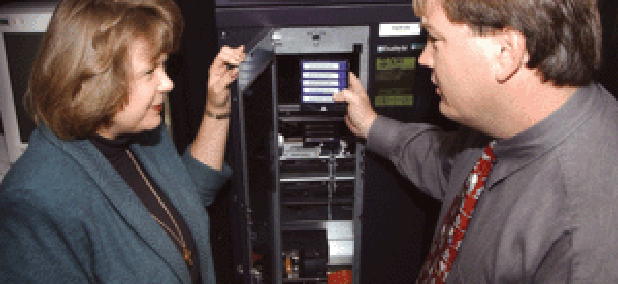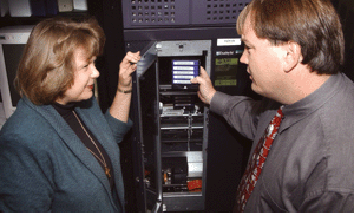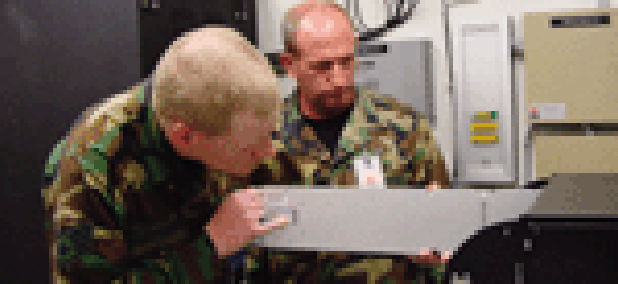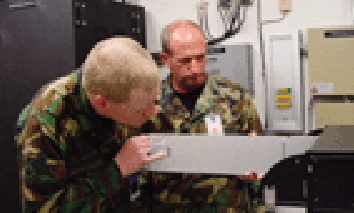Author Archive
Patricia Daukantas
Software AG helps N.D. lawmakers
During late-night debates or heated committee hearings, state legislators in North Dakota can use a new system to keep track of the latest bill amendments.
- By Patricia Daukantas
New ERA for NIH's grants system
The National Institutes of Health will upgrade its research grants application and processing system to an object-oriented architecture using Java 2 Enterprise Edition.
- By Patricia Daukantas
NASA taps Accenture for more IFMP work
NASA's Marshall Space Flight Center has contracted with Accenture Ltd. to continue development and maintenance services for an Integrated Financial Management Program.
- By Patricia Daukantas
VA will offer IT acquisition services
An enterprise center within the Veterans Affairs Department is starting a franchise program to provide IT acquisition services to other federal agencies.
- By Patricia Daukantas
With 10g, Oracle latches onto the grid
Oracle Corp. is retooling its flagship product to embrace the grid-computing concept of pooled computing resources.
- By Patricia Daukantas
Health site earns top marks in e-gov user satisfaction survey
Customers give federal Web sites better performance scores than offline government functions, but slightly worse scores than the national average of a general-purpose customer satisfaction index
- By Patricia Daukantas
Report: In a crisis, interoperability is critical
An industry trade group says the Homeland Security Department should focus its IT architecture efforts on interoperability rather than technology.
- By Patricia Daukantas
SAN makes storage simple
The Air Force 45th Space Communications Squadron cut the time it spends backing up data from 12 hours to just two and one-half hours by installing a storage area network.
- By Patricia Daukantas
Three companies get supercomputing R&D contracts
The Defense Advanced Research Projects Agency has awarded three computer manufacturers contracts to design high-performance computers for national security needs.
- By Patricia Daukantas
Do-not-call Web site gets plenty of calls
AT&T Government Solutions was adding servers and tweaking performance over the course of the day to handle a heavy load at the web site for the first nationwide do-not-call program to block telemarketers.
- By Patricia Daukantas
Energy will seek bids to manage Los Alamos
The Energy Department will seek competitive bids to manage Los Alamos National Laboratory when the University of California's contract runs out in September 2005.
- By Patricia Daukantas
IAC prepares its own data reference model
The Industry Advisory Council is about to release its own version of a data reference model for a federal enterprise architecture.
- By Patricia Daukantas
Homeland Security juggles architectural challenges
Not only does the Homeland Security Department need to develop a unified IT architecture for its 22 component agencies, but it has to have something in place for developing the fiscal 2005 budget over the summer, a representative said today at the FOSE 2003 conference.
- By Patricia Daukantas
SCO sues IBM over Unix
<FONT SIZE=2>	The SCO Group of Lindon, Utah, is suing IBM Corp. for $1 billion over intellectual property rights to the Unix operating system. </FONT>
- By Patricia Daukantas
Holcomb lays out HSD blueprint
The Homeland Security Department won't own all of the "network of networks" it plans to coordinate antiterror information.<br>
- By Wilson P. Dizard III and Patricia Daukantas
IBM makes $290 million supercomputer pact
IBM was awarded a $290 million contract to build two supercomputers for the Accelerated Strategic Computing Initiative.<br>
- By Patricia Daukantas
Two Linux clusters among Top 10 fastest computers
Five of the planet's 10 fastest supercomputers are owned by the U.S. government, and two others reside at research centers that receive substantial federal support, according to new rankings.<br>
- By Patricia Daukantas
The name game
<FONT SIZE=2>For 16 years, the National Library of Medicine has been trying to solve the biggest interface problem between computers and medicine: vocabulary.</FONT>
- By Patricia Daukantas
iManage tames the paper tiger
<FONT SIZE=2>The Justice Department's Antitrust Division has made a case for document management.</FONT>
- By Patricia Daukantas
AF medical office hopes rack-mount PCs are cure for costs
An Air Force medical clinic in Utah is testing more than just blood pressure and eyesight. The 75th Medical Group at Hill Air Force Base is trying out a centralized system of rack-mount blade PCs to see if they will save time and money compared with standard desktop clients.
- By Patricia Daukantas






